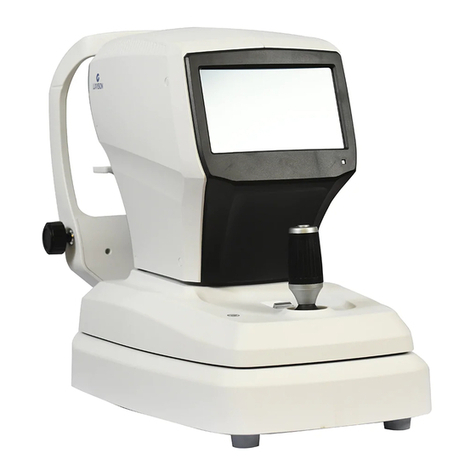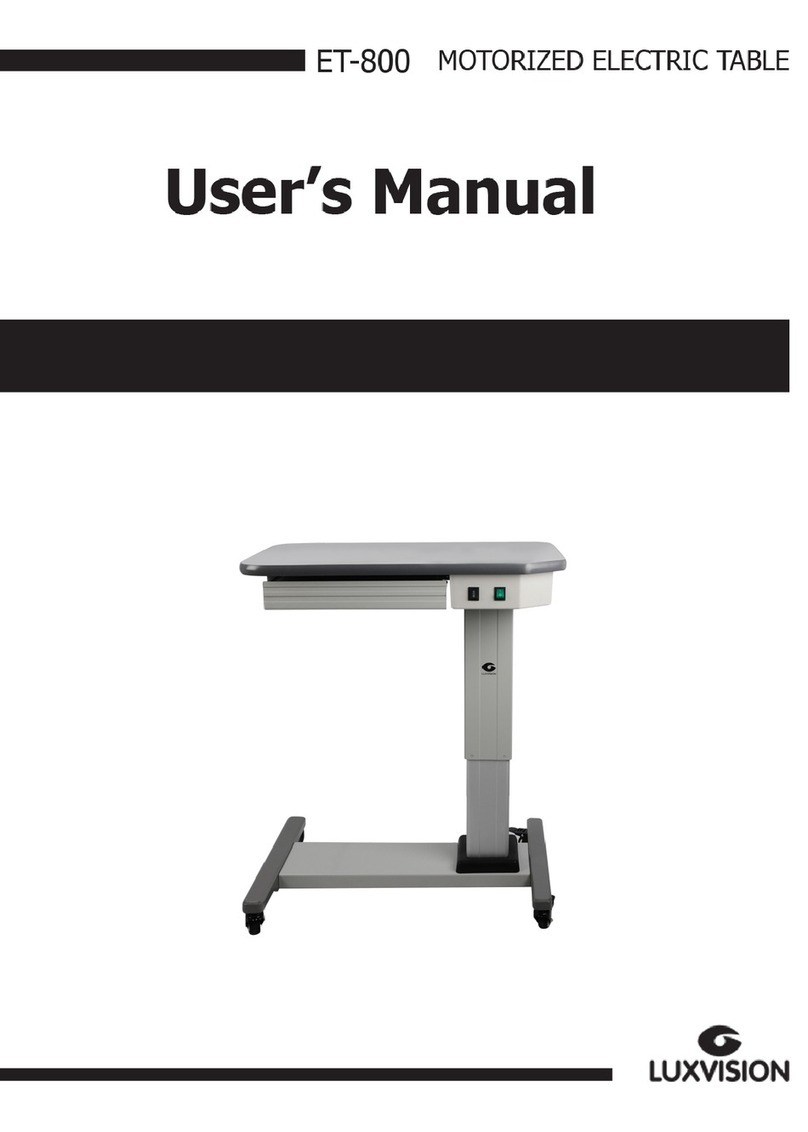
Notication
Dear Users,
Thank you for your purchase of RU 1400 Refraction Unit. Please take time to read our
user’s manual carefully before use.
This guarantees you to make full use of this unit and prolongs the operation life of
this unit.
Precautions
If you have detected abnormal heat, smoke, noise or smell, immediately stop using
the product.
In the event of an abnormality, turn off the power and disconnect the power plug from
the power socket. Continuing to use the product may result in electric shock or re.
Observe the instructions given below regarding the power cable:
• Be sure to use the supplied or specied power cable.
• Do not modify, forcibly bend, kink or pull the power cable.
• When disconnecting the power cable from the AC outlet, be sure to hold the cable
by the plug.
Pulling the cable may cause wire breakage or shot circuit, resulting in re or electric
shock.
• Do not connect or disconnect the plug of the power cable to/from the AC outlet
using wet hands.
Doing so may result in electric shock.
• Do not touch the product with wet hands while the power cable is connected
to the AC outlet.
Doing so may result in electric shock.
• If the product will not be used for a long period, disconnect the power cable
from the power source. Leaving the cable connected to the power socket for
a prolonged period will consume electricity and may result in heating.
































